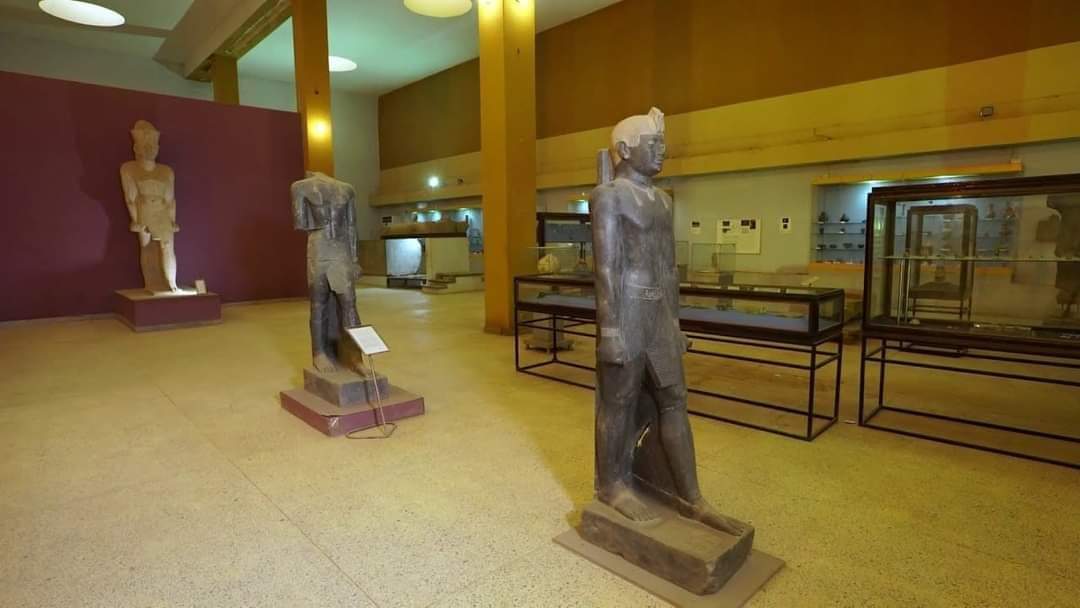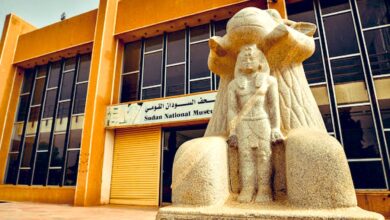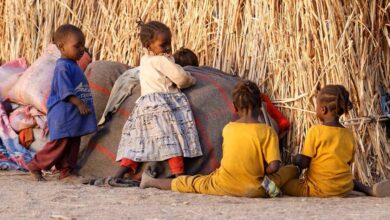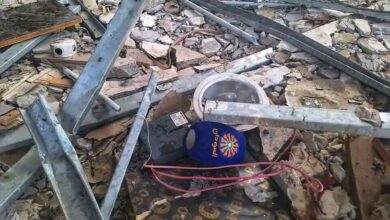Theft of Rare Manuscripts and Artworks Documenting Sudanese Life and History
Mashawir – Agencies

The impact of war in Sudan has extended to all aspects of life, including the arts, with cultural landmarks and museums looted or destroyed, erasing a rich heritage of knowledge and visual expression. Cultural centers and institutions have not been spared from acts of vandalism, looting, and theft.
In Khartoum, where the armed conflict first erupted, art exhibition venues were destroyed, and rare paintings and valuable artifacts worth thousands of dollars were stolen, including manuscripts, archives, display screens, and artistic tools and equipment.
Artistic Activities and Events
The artistic movement has relocated to safer parts of Sudan and neighboring countries like Ethiopia and Egypt, where exhibitions promoting peace and rejecting war are being held. Many visual artists have become internally displaced or refugees abroad.
The Sudanese Artists Union organized a children’s drawing workshop in Port Sudan, and the Red Sea State hosted numerous themed exhibitions and artistic events, including forums in the city of Gedaref. In Al-Jazirah State, refugee shelters displayed children’s exhibitions. Artist Abdulrahman Abdullah Shingal held an art exhibition titled “Dark Tears” at the Fendika Cultural Center in Addis Ababa, Ethiopia, showcasing over 40 paintings portraying the tragedies of war, displacement, and civilian suffering. The event saw large attendance from international artists, along with additional exhibitions in Cairo, Egypt.
An End to an Artistic Project
Ghassan Al-Balloula, director of the Omdurman Cultural Center, said the center was turned into a military barracks, with priceless artwork stolen, including a historic painting of the city of Omdurman. The attached museum, furniture, equipment, and musical instruments were also looted, along with an exhibition by artist Mohamed Siddig that had just launched days before the war began. The archives, the Sudanese cinema museum, old cameras, and the outdoor cinema screen were also lost. He emphasized that historic artworks that took years to create, including those left by deceased artists, were destroyed. Equipment from the main cinema hall and a modern library were also lost.
Al-Balloula added that “the project, which had been in the making for three years and involved massive funding, was completely destroyed and looted, with the war obliterating rare works and valuable collections.”
Destruction and Vandalism
Rahim Shaddad, director of Downtown Gallery, described the damage to the gallery as a “disaster,” noting that it was located in central Khartoum, now turned into a military zone. Artworks were looted, the center’s safe was stolen, and parts of the building were destroyed. He also mentioned that a military force converted the main hall into their residence.
Shaddad noted that the gallery contained 85 canvas paintings and a similar number on paper, 300 unframed artworks, a large collection of valuable photos, and artists’ equipment. He reported that most of these were either destroyed or looted, with ongoing thefts. He expressed the frustration of visual artists witnessing a clear and significant threat to historical and cultural landmarks, with neither side of the conflict showing concern for over seven months.
Symbolism and Artistic Value
While the armed conflict that began in Sudan in mid-April 2023 created the country’s worst humanitarian catastrophe, the destruction of art and cultural sites marked a parallel tragedy for many generations.
Shihab Omar Abbas, director of the Rashid Diab Art Center, said that a military force stormed the center, which housed valuable and rare artworks by Sudanese and international artists, children’s exhibitions, and the “National Museum for All Generations” project. The site sustained direct damage, though the full extent has yet to be assessed. According to neighborhood residents, the center was looted.
Abbas emphasized that art exhibition venues hold deep symbolic and artistic value for future generations and represent part of Sudan’s civilization and historical identity. He stressed the need to preserve them instead of destroying and plundering their contents by individuals who do not recognize their value and significance.
He expressed sorrow over the loss of rare works that documented Sudanese life, people, and history, as well as entire art museums, equipment, furniture, musical instruments, and paintings that took years to complete.
Art Reflecting Reality
Researcher in visual arts, Mohamed Al-Wathiq, stated that the looting and destruction of art galleries and cultural centers have deeply affected the message and goals of visual art exhibitions. He noted that the emotional impact can be seen in the use of colors reflecting sorrow, suffering, trauma, and loss.
He explained that most artists have, consciously or unconsciously, infused their work with the trauma of war, displacement, and devastation, portraying how Khartoum was transformed into a battlefield and its people scattered across the globe. “Only those who have lived through the war can truly express its anguish,” he said, adding that the conflict’s atmosphere has deeply influenced the mood and ideas of visual artists.




